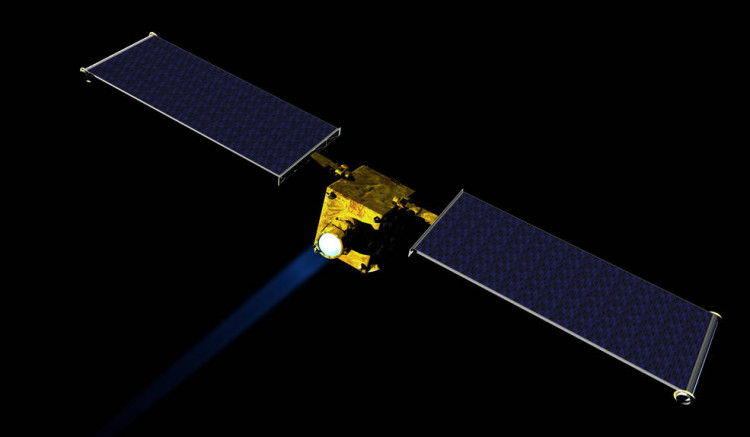A NASA spacecraft is scheduled to blast off from Vandenberg Space Force Base in California at 10:20 p.m. PST on Tuesday in the first real-world test of a technique that could one day be used to safeguard Earth from a threatening space rock.
Small particles of debris are continually bombarding our planet, but they are normally incinerated or broken up long before they reach the ground. However, every now and then, something large enough to cause considerable harm falls on the ground.
One such collision is considered to have ended the dinosaurs' reign some 66 million years ago, ejecting huge quantities of dust and debris into the upper atmosphere, obscuring the sun and causing food chains to collapse. Unless we can find a means to deflect it, something comparable could end humanity's existence one day.
NASA's Double Asteroid Redirection Test (DART) mission is the first attempt to see if asteroid deflection is a viable tactic. The project will look into whether a spacecraft can autonomously navigate to a target asteroid and crash on it, as well as measure the amount of deflection.
"The right time to deflect an asteroid is as far away from the Earth as we can," Lindley Johnson, NASA's planetary defense officer, said. "The strategy is to find these objects not only years but decades before they are any kind of an impact hazard to the Earth."
With enough warning, NASA might send a spacecraft out to give an asteroid a gentle push, causing it to change course and no longer pose a threat. NASA is putting this technique to the test with DART.
DART's target asteroid isn't a threat to the world right now, and NASA believes there's no way this mission will change that.
Following its launch, the DART spacecraft will spend nearly 10 months journeying out toward Didymos, a 2,500-foot-wide asteroid. This asteroid is orbited by Dimorphos, a minor asteroid measuring around 525 feet across.
The spacecraft will collide with this tiny asteroid -- Dimorphos.
"So it's like a small golf cart running into a Great Pyramid," Nancy Chabot, who serves as DART's coordination lead, said. This "golf cart" will, however, go at a speed of 15,000 miles per hour.
Managers on Earth will only be able to observe as the spacecraft flies autonomously and closes in on its target in the final hours of the mission.
If everything goes well, this mission will give us real-time data on the effects of a small impactor on a tiny asteroid.






